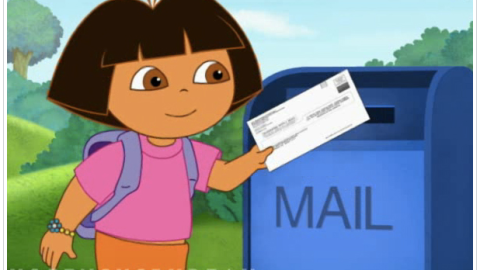A Campaign that Engages Every American: Five Lessons from the 2010 U.S. Census

How do you create a communication campaign that reaches every single person in the nation? More specifically, in a world of information disparities and fragmented attention, how do you create a campaign powerful enough to span people living in mobile homes, on Native American reservations, the homeless, people in remote parts of Alaska, non-English speakers, and young people?
Every ten years, the U.S. Census Bureau’s communications team faces this challenge.
On Monday, Steve Jost, Associate Director of Communications for the U.S. Census Bureau, dropped by American University Professor Joe Graf’s course to talk about the challenges and strategies behind the 2010 Census Integrated Communications Campaign. AU graduate student Trina Stout reports.–Matthew Nisbet
Background: What Is the U.S. Census?
The Census is a constitutionally mandated count of everyone in the country that occurs every ten years; the results are used to allocate electoral votes, seats in Congress, and government funding. Census workers must count every single household.
The economic stakes are high: If a household mails back their Census form, it costs the government $0.42 in prepaid postage. If they don’t, the follow-up house call costs $57.
The goal of the Census team’s communication campaign was to get people to participate in the Census. This involved making people aware of what the Census is and why it’s important, and encouraging them to take action — to mail back their forms. (And after the mail-back deadline, to respond to a house call.)
Challenges Faced in 2010
Aside from reaching 300 million people, challenges to undertaking the Census included:
Ultimately, the Census team decided to reach people through five platforms: paid advertising, partnerships, earned media/PR, digital, and the Census in Schools program.
Here’s what they did in five steps you can adapt to any communications campaign.
1. Use Research-based Targeted Advertising
The Census spent $374 million on advertising, or $1.20 per person. You don’t spend that kind of money without doing major research first, so the Census team conducted over 4,000 surveys and 115 focus groups in 24 languages. Then they hired a New York ad agency, which subcontracted out to 12 other agencies that specialized in different demographic audiences. Most of the ad budget was spent locally, in ethnic markets, with ads customized to those target audiences.
2. Get Creative with Partnerships
The census partnered with 257,000 organizations, ranging from churches to community groups to corporations. Some examples of how these partnerships played out: Best Buy showed Census PSAs in their stores, the Postal Service printed “Mail back your Census” reminders on their envelopes, and Spanish television channel Telemundo created a storyline in a popular show about a woman who mailed back her Census.
3. Generate Newsworthy PR and Anticipate Problems
Census workers hit the road on a national Road Tour, earning mentions on The Today Show, local news, and several other outlets, resulting in 217 million “earned media impressions,” meaning that coverage of the Road Tour was seen or heard about 217 million times. The Census team feared that an embarrassing photo — a Census bus stopped by police, for example — uploaded by a citizen journalist would go viral, tarnishing the Road Tour. So they required drivers to blog twice a day, flooding the web with positive Road Tour content. (And luckily, there were only two speeding tickets.)
4. Meet Your Audience Where They Are on the Web
The Census team made a dynamic, multimedia website available in 57 languages. The Census Director had a blog. They established a presence on Facebook, YouTube, Flickr, and Twitter, where they uploaded photos and video from the Road Tour, sent updates, invited citizens to post testimonials, and more. They created an interactive, Google-like map of mail-back rates so people could see the response rate in their neighborhood, and compare it to other parts of the country.
5. Reach Influentials — Even in Unexpected Places
The Census team launched an assertive “Census in the Schools” program that reached 56 million schoolchildren. They provided 130,000 teachers with materials on how to teach what the Census is and why it’s important in their geography, political science, history, and other classes.
How are schoolchildren influential? In many immigrant families, they are the only ones who speak English. And in general, children can bring the Census message home to parents who might otherwise have missed it.
What Were the Results?
The Census team’s integrated communications campaign succeeded in raising awareness and participation. People who had heard or seen anything about the Census increased from 35% in December 2009 to 92% by April 2010, when Census forms were due back. Those who intended to participate increased from 77% to 96% in the same period.
In the end, 72% of households mailed back their Census forms, the same as in 2000. Because so many people mailed back their forms, the Census was able to return $1.6 billion to the Treasury. Census workers followed up with house calls to the remaining 47 million households.
What do you think of the campaign? What would you have done differently? What do you think the challenges will be for the 2020 Census? How do you think the media landscape will change in the next 10 years?
–Guest post by Trina Stout, a graduate student at American University’s School of Communication. Before graduate school, she worked for the environmental news and humor site Grist.





